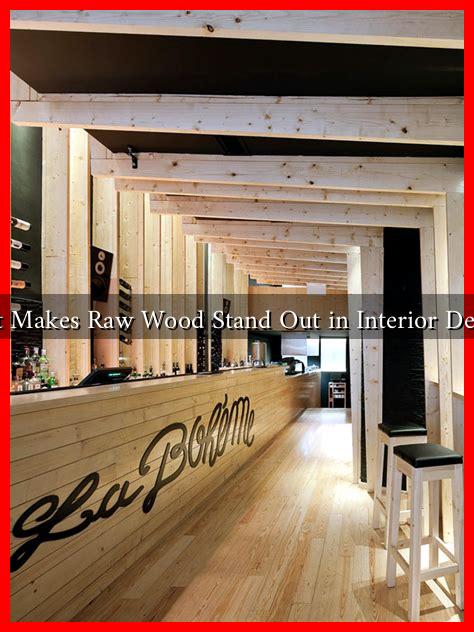-
Table of Contents
What Makes Raw Wood Stand Out in Interior Design?
In the world of interior design, materials play a crucial role in defining the aesthetic and functional qualities of a space. Among these materials, raw wood has emerged as a standout choice for designers and homeowners alike. Its unique characteristics, versatility, and natural beauty make it a favored option in various design styles. This article explores the reasons why raw wood is a compelling choice in interior design, supported by examples, case studies, and relevant statistics.
The Aesthetic Appeal of Raw Wood
Raw wood brings a sense of warmth and authenticity to any interior space. Its natural grain patterns, textures, and colors create a visual interest that is hard to replicate with synthetic materials. Here are some aesthetic benefits of using raw wood:
- Unique Patterns: Each piece of wood has its own distinct grain, making every installation unique.
- Warmth and Comfort: The organic nature of wood adds a cozy feel to spaces, making them more inviting.
- Versatility: Raw wood can complement various design styles, from rustic to modern.
For instance, in a contemporary home, raw wood beams can contrast beautifully with sleek metal fixtures, creating a balanced and harmonious environment. A case study from the Architectural Digest showcases a modern loft where reclaimed wood was used for flooring and accent walls, enhancing the overall aesthetic while maintaining a connection to nature.
Environmental Sustainability
As sustainability becomes a priority in design, raw wood stands out as an eco-friendly option. When sourced responsibly, wood can be a renewable resource that contributes to sustainable building practices. Here are some key points regarding the sustainability of raw wood:
- Renewable Resource: Wood is a natural material that can be replenished through responsible forestry practices.
- Carbon Sequestration: Trees absorb carbon dioxide, helping to mitigate climate change.
- Biodegradable: Unlike synthetic materials, wood is biodegradable and can be composted at the end of its life cycle.
According to a report by the World Wildlife Fund, sustainably sourced wood can significantly reduce the carbon footprint of a building project. This makes raw wood not only a beautiful choice but also a responsible one.
Durability and Longevity
Raw wood is not just about looks; it also offers durability and longevity when properly maintained. High-quality wood can withstand the test of time, making it a wise investment for interior spaces. Consider the following:
- Strength: Hardwoods like oak and maple are known for their strength and resistance to wear.
- Timelessness: Wood ages gracefully, often becoming more beautiful as it develops a patina over time.
- Repairability: Scratches and dents can often be sanded out, allowing for easy maintenance.
A notable example is the use of reclaimed wood in high-end restaurants and hotels, where the material not only adds character but also stands up to heavy foot traffic and wear. A case study from Dezeen highlights a restaurant that utilized reclaimed barn wood for its interior, showcasing both durability and aesthetic appeal.
Raw Wood in Various Design Styles
Raw wood is incredibly versatile and can be integrated into various design styles, enhancing the overall theme of a space. Here are some popular styles that benefit from the use of raw wood:
- Rustic: Emphasizes natural materials and a cozy, homey feel.
- Modern: Contrasts raw wood with sleek lines and minimalist decor.
- Industrial: Pairs raw wood with metal and concrete for an edgy look.
For example, in a rustic cabin, exposed wooden beams and reclaimed wood furniture create a warm and inviting atmosphere. In contrast, a modern apartment might use raw wood accents to soften the starkness of contemporary design elements.
Conclusion
Raw wood stands out in interior design for its aesthetic appeal, environmental sustainability, durability, and versatility across various styles. As designers and homeowners increasingly seek materials that offer both beauty and functionality, raw wood continues to be a top choice. Its unique characteristics not only enhance the visual interest of a space but also contribute to a more sustainable future. By incorporating raw wood into interior design, one can create spaces that are not only stylish but also resonate with nature and authenticity.


